Bronze Age Fashion in Syria
5253
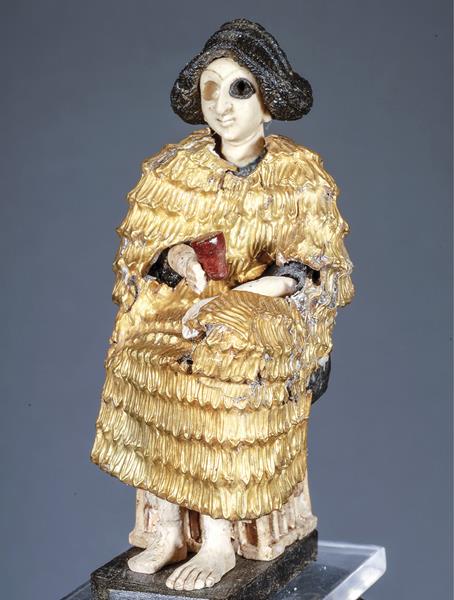
At the turn of the 20th century Mark Twain reportedly said, “Clothes make the man. Naked people have little or no influence on society.” But he was hardly the first to say it. The king’s adviser Polonius reminds Laertes in Act 1, Scene 3 of Hamlet, “For the apparel oft proclaims the man.” But neither was Shakespeare, around 1600, the first to express this idea.

Believe it or not, Desiderius Erasmus Roterodamus, the Catholic priest and theologian best known for his compilation of a Greek New Testament (the third edition of which became the basis for the King James Version), recorded the proverb as well. In 1500, Erasmus compiled a collection of 800 Greek and Latin proverbs, Collectanea Adagiorum (“Collection of Adages”), followed by an expanded version in 1508, Adagiorum Chiliades (“Thousands of Adages”), which contained more than 3,000 proverbs, to which Erasmus continued to add until his death. 54In Adagia 3.1.60, Erasmus claims to quote Quintilian’s (Marcus Fabius Quintilianus) work, Institutio Oratoria 8.1.20 as saying, “vestis virum facit,” or, “clothes make the man.” The truth is Quintilian actually said, “Again, a tasteful and magnificent dress, as the Greek poet [Homer] tells us, lends added dignity to its wearer.” Nowhere does Quintilian say “vestis virum facit,” nor does the phrase appear anywhere in ancient literature.
But that doesn’t make it any less true. The way we dress has always said something about us, whether we intend it to or not. This is true today just as it was true thousands of years ago.
So how exactly did people dress in ancient Syria, specifically at Ebla, one of the earliest kingdoms of the ancient Near East? And what did different styles say about those Eblaites who wore them?
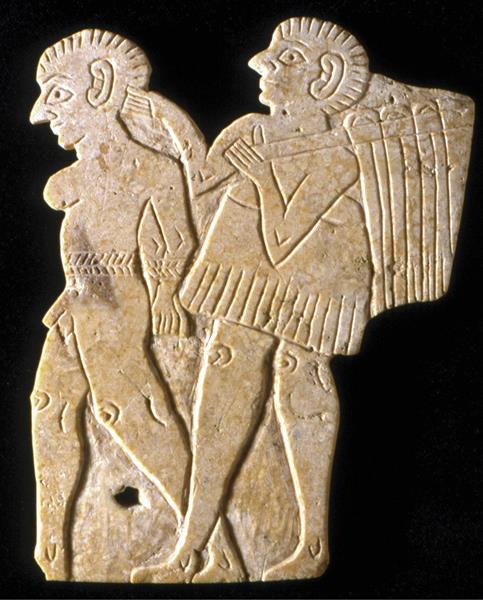
Dress qualified a person. In the same way that jewels and weapons decorated with gold conveyed wealth and status, particular articles of clothing were considered prestige goods. Elaborate garments were presented as gifts—in some cases along with weapons and jewels—to kings, foreign diplomats and guests, leaders who came back from victorious military campaigns, and to messengers who brought important news. They were also given for births, marriages, and funerary ceremonies.
During the Early Bronze Age (3000–2000 B.C.), the state of Ebla in ancient Syria was organized according to a redistributive system: The central administration collected goods from its own estates and from village communities, thus providing for the maintenance of the elite and its personnel. Ebla’s two major manufacturing activities were textile production—mostly wool and linen—and metalworking.
Many textiles from Ebla’s minor centers were collected by the minister. The annual documents register a standing growth of such deliveries: Those of the first years of Minister Ibrium (35–30 years before the fall of the city in 2370–2350 B.C.) counted about 1,800 garments and 1,300 kilts, while those of Minister Ibbi-zikir (2349–2334, the years right before the destruction) tallied about 5,500 garments and 3,000 kilts. These manufactured garments could have been easily adapted to their owners, as is the case of garments sold today in a souq.
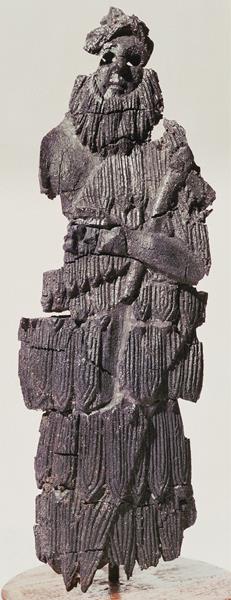
Garments were white, black, and reddish (dyed with madder, a Eurasian herb with roots traditionally used to dye objects various hues of red); kilts of first quality were multicolored. Although colors had no particular symbolic values, we do see some trends: Women received sets of clothing with white and reddish garments on the occasion of their wedding or when becoming priestesses. Princesses received white, reddish, and black clothes. Women’s funerary outfits were red. Worshipers presented black clothes to the mother goddess. The king wore multicolored kilts and white garments.
In exercising its hegemony, Ebla annually sent a set of garments to its allied cities’ kings and councils of elders: a cloak, skirt, and multicolored kilt generally folded three times. The pieces of clothing sent to the kings were reportedly “of the best quality.” The cloaks and kilts given to the elders were generally more simplistic. The messengers who delivered these gifts received either a “thin cloth” (Eblaite: sal-TÚG) or a “cloth of low-quality wool” (gu-mug-T.). In return, these cities sent to Ebla small amounts of silver and garments of the same kinds they had received. It was, therefore, a ceremonial exchange of gifts 55aimed to assert the ties of friendship.
A traditional outfit for men consisted of a robe or cloak (’à-da-um-TÚG), a skirt (aktum-T.), and a multicolored kilt folded three times (íb-III-T.-gùn). Kings and members of Ebla’s elite would receive the “double cloak,” while the elders, the representatives of the people in the villages, were given a simpler, “single cloak.”

A wooden carving—hanging originally in a court with porches to the Administrative Quarters—depicts the Eblaite king Irkab-damu (r. c. 2340 B.C.) wearing a turban and a cloak, which reaches his feet and leaves his right shoulder exposed, and holding an axe in his left hand. The cloak is decorated with five rows of woolen tufts, the typical clothing decoration for elite men and women known as kaunakes, which also appear on Mesopotamian clothing from the first half of the third millennium B.C. The turban (tÚg-ZI.ZI) worn by the king was a kind of wig with a lock hanging to one side.
Several inlays from Mesopotamia of the Early Dynastic period (25th–24th centuries B.C.) represent male figures with bare chests. We may suppose that they wore a simple cloth (gu-dùl-T.) during the colder seasons. The ceremonial dress of kings and the members of the elite was, therefore, a cloak and skirt both with the heavy decoration of woolen tufts, while the chest (generally depicted bare at Ebla and in Mesopotamia) was protected by a thin yarn when necessary.
Men of lower status wore a kind of kilt (íb-III-T.-gùn) made of lower-quality cloth. The king wore this type of kilt as 56underwear—decorated (“three times folded”) and with a rather prominent belt, reserved only to the upper class.
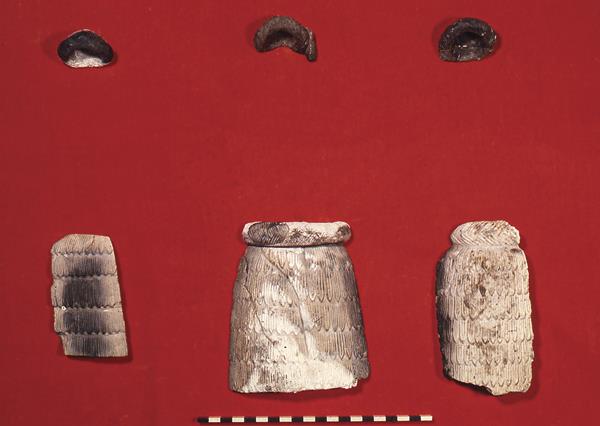
Members of a religious confraternity, which young elite men were required to join for a fixed number of years, as well as priests, might receive a cloak (’à-da-um-TÚG). Singers, musicians, dancers, acrobats, as well as the men employed in menial works or recruited for the army, received clothes of low-quality wool (gu-mug-T.) and kilts.
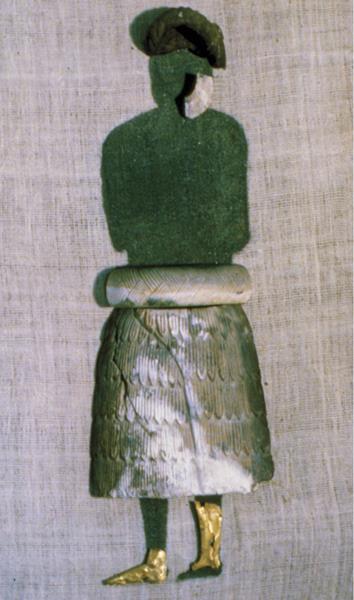
The outer dress of a woman of high rank was a robe (zara-T.). This style of dress is depicted by a miniature statuette of a queen or a goddess—shown with bare feet! With many rows of heavy woolen tufts, the cloth covered the whole figure from the shoulders to the feet like a heavy mantle, with only an opening for the arms in the front. The statuette’s head should be interpreted as a wig. It is difficult to establish the purpose of such an object.
Ebla also had statues of natural dimension, as proven by three stone wigs. They belonged to 57composite statues with a wooden support and parts of other materials.
Women of lower rank wore a long robe (túg-NI.NI). This style is depicted on another miniature female figure, wearing a long robe and a head veil (gíd-T.). For fixing these clothes in place, women used a toggle pin. They also wore a stole (du-ru-ru). During the marriage rite, women covered their faces with a veil (pad-T.).
Clothing lists from Ebla often end with an item called gàr-su, perhaps a bag. These were usually black, but also white and red, and sometimes with pleats (giš-ti).
Men—and women as well—received “bands for the head, the breast, the feet.” Until quite recently, bands were used for protecting feet and to support a woman’s breasts. For the foot bands, they used a “thin fabric” (sal-T.).
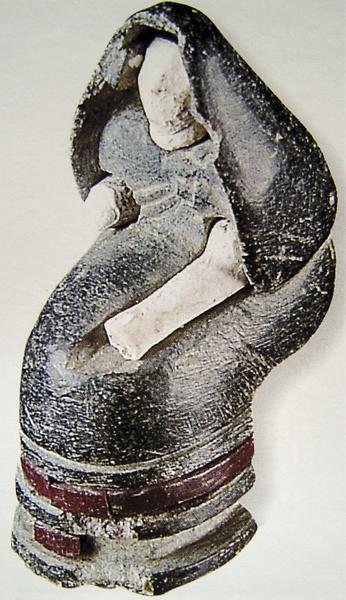
Clothing and jewels defined the status of the owner in life as in death. Members of the lower class received just a “thin cloth” for their funerary rites. Foreign kings would be given the same clothing they received annually in life. Similarly, the outfit provided to women for their wedding or for taking vows was the same they received for their funeral.
The value of articles of clothing varied: A cloak (’à-da-um-TÚG) fluctuated between 70 and 117 g of silver; a skirt (ak-tum-T.), 31–195 g; a thin cloth (sal-T.), 5–31 g; a cloth of low-quality wool (gu-mug-T.), 8–31 g; a high-quality kilt (íb-III-T.), 6–10 g; a veil (pad-T.), 157–314 g; a woman’s robe (zara-T.), 32–117 g; a woman’s long robe (túg-NI.NI.), 20–82 g.
Small statues of gods found at Ebla were made of stone with faces, hands, and feet covered with gold or silver leaf. In some cases their dresses were also gold. Large statues had a core of wood to which stone hair, eyes, and beards were attached. They were dressed with the same garments as humans. For example, the storm god wore just a kilt, leaving his chest exposed, and held an axe.
Strangely enough, clothing lists concerning deities do not always distinguish clothes according to gender. Although such cases are not rare, they perhaps simply might be explained as sloppy registrations. Kura, the city god, and his spouse both reportedly received a skirt (aktum-T.): a cloth worn by men, which would have left the goddess’s chest exposed. According to other passages, both deities received a female dress (zara-T.). On another occasion, Kura alone received a woman’s long robe (túg-NI.NI). The god Rašap (Rešef) and his spouse, Adamma, as well as the god ’Adabal and his wife, Ba‘ltum (“the Lady”), each received a woman’s dress (zara-T.). However, the jewels of Rašap and ’Adabal corresponded to their gender.
Thus, in ancient Ebla, like today, clothes made the man … and the woman, and the priest, and the deity. Like today, clothes of various quality cost different amounts and conveyed social stature. They were worn functionally for protection and were given as gifts to solidify friendships and relationships. Although styles may have changed drastically over the millennia, the roles that clothes play in society—as protection and status markers—have largely remained the same.
In ancient Syria, clothes served as protection, status markers, and gifts for diplomacy. See the variety of clothing—from robes to skirts—at ancient Ebla.
You have already read your free article for this month. Please join the BAS Library or become an All Access member of BAS to gain full access to this article and so much more.
Already a library member? Log in here.
Institution user? Log in with your IP address or Username
